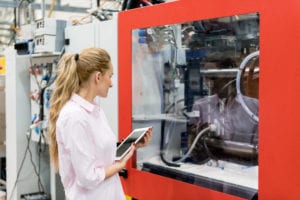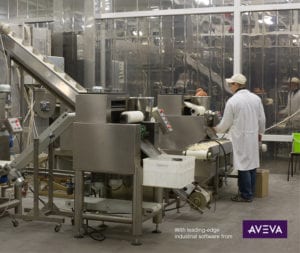Efficiency / Productivity: where are we?
In the last 10 to 20 years, a lot of companies have optimized their “business processes” by implementing an Enterprise Resource Planning (ERP) system such as SAP, Oracle, Microsoft, etc.
On the other hand, these same companies have optimized their “manufacturing or operating processes”, mostly by implementing more automation.
Both efforts above have brought strong productivity gains to these companies, but most of industrial companies in “advanced economies” are now facing a strong reduction in their productivity rate (see charts below).
Productivity Statistics from OECD
IT/OT convergence: the next big step in productivity
We can and should certainly continue to make productivity gains in our business processes and our operational processes. Those gains however will be more and more marginal. The next big step forward in productivity and efficiency is to bring together the information coming from the business and the information coming from the operational, industrial processes. And therefore to reach one global optimum for the company performance instead of trying to achieve two local optima that are mathematically less performing.
By fully combining all the knowledge about our customers and our business that come from our ERP’s and CRMs (Customer Relationship Management) with a real time knowledge of what our processes can deliver and how they deliver it, we’ll be able to breach the ceiling of productivity and also make additional gains on quality and traceability.
This is very often called the convergence of IT with OT.
Are we ready? Is it now?
The software needed to bridge the gap between the ERP and the operational process (or for the more technical, between “the SCADA” and “the ERP”) are available now. They are called MES, historians, analytics, etc … and they can be implemented immediately and will deliver immediate value.
However, to realise the full value of this convergence, the industry will need to lower and simplify the cost to access to the data. The industrial internet of things (IIOT) associated with new network architectures and new PLC innovation, coming on the market now, are key enablers.
Finally, the industry will need to merge the process/OT networks with the business / IT networks. That, will bring additional cybersecurity constraints to the operational / industrial processes. A whole new set of services to implement cybersecurity while preserving the high availability requirements which is so critical in industrial processes, is emerging and becoming available to enable a smooth integration.
So a combination of software, new automation architecture and cybersecurity services, all available now, are the key ingredients for the next productivity step-up of the industry.
Industrial companies that look to survive, to out-perform their competitors, the call to action is now!



Conversation
In regards to Information Technology or Plant Data Security , many manufacturing companies fall short of hardening security of it’s plant software applications. It is now equally important to do security code reviews of PLC and Wonderware Intouch applications. Particularly of those written over seas. Unfortunately, some companies think plant security is putting out a switch is good enough for security. Its not.
Hi Norman,
Thanks for your interest and comment.
You’re absolutely right. Cybersecurity means much more than choosing the right switch … Companies need to change culture and address the whole lifecycle of cybersecurity in addition to choose products and software adequately designed.
I have in mind for the lifecycle management standards like ISA/IEC 62443 (Adopted from ISA99) and for the products, certifications like ISASecure or Achilles.
I believe that the OT cybersecurity journey will be somewhat similar to the safety journey of the last 15/20 years but will probably go much faster. That journey has requested new products, new architectures but also a change in people behaviours.
Philippe